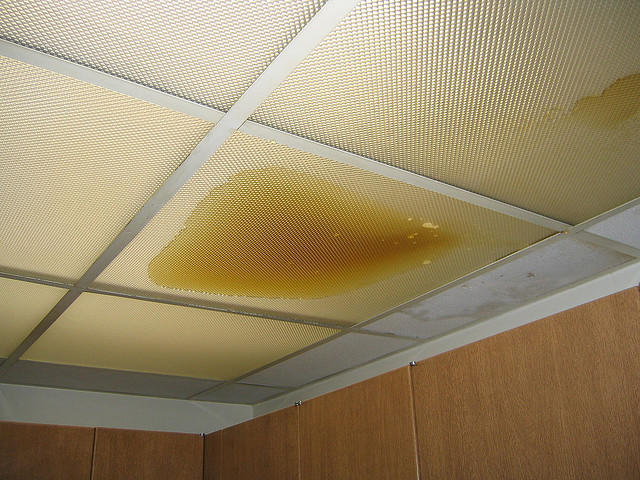Nearly everybody is bound to have their own individual piece of advice in relation to Finding hidden leaks.

Early detection of dripping water lines can alleviate a possible catastrophe. Some tiny water leakages may not be noticeable.
1. Analyze the Water Meter
Every house has a water meter. Inspecting it is a surefire way that aids you discover leakages. For starters, shut off all the water resources. Guarantee nobody will certainly purge, use the tap, shower, run the cleaning machine or dish washer. From there, most likely to the meter and watch if it will alter. Given that no one is using it, there must be no activities. If it relocates, that indicates a fast-moving leak. If you spot no modifications, wait an hour or two and check back once again. This implies you may have a slow leak that can also be below ground.
2. Inspect Water Consumption
If you detect sudden modifications, regardless of your usage being the very same, it means that you have leaks in your plumbing system. An unexpected spike in your costs shows a fast-moving leakage.
On the other hand, a consistent rise on a monthly basis, even with the same practices, shows you have a sluggish leak that's also slowly intensifying. Call a plumber to completely check your property, specifically if you really feel a warm area on your flooring with piping below.
3. Do a Food Coloring Test
When it pertains to water intake, 30% comes from bathrooms. Examination to see if they are running properly. Drop specks of food color in the tank and wait 10 minutes. There's a leak between the tank and dish if the shade somehow infiltrates your bowl throughout that time without flushing.
4. Asses Exterior Lines
Do not forget to examine your outside water lines also. Test faucets by connecting a yard hose pipe. Should water leak out of the connection, you have a loosened rubber gasket. Replace this as well as ensure all connections are limited. It will certainly help get it expertly analyzed and kept each year if you have actually got a sprinkler system. One little leak can squander lots of water and also surge your water bill.
5. Evaluate and Assess the Circumstance
House owners should make it a routine to examine under the sink counters and even inside closets for any bad odor or mold and mildew development. These two red flags indicate a leak so prompt interest is needed. Doing regular evaluations, also bi-annually, can save you from a significant problem.
Much more importantly, if you recognize your home is currently old, maintain a watchful eye on your heating systems, pipes, pipelines and so on. Look for stainings as well as damaging as many pipes and appliances have a life expectancy. They will additionally normally weaken due to damage. If you suspect dripping water lines in your plumbing system, don't await it to escalate. Call a professional plumber immediately so you do not end up with a dreadful mess in your home.
Early discovery of leaking water lines can reduce a prospective calamity. Some tiny water leaks may not be visible. Inspecting it is a proven means that aids you find leakages. One small leakage can throw away bunches of water and spike your water bill.
If you suspect leaking water lines in your plumbing system, do not wait for it to rise.
How to Know If Your Home Has a Hidden Leak
Water Meter Reveals Inexplicable Water Usage
If you’d like to test whether or not there’s a leak somewhere in your home, you can do this using your water meter. Here is how to conduct the test:
Don’t use any water in your home for at least 30 minutes; this also means not turning on faucets or water-using appliances.
Go outside, and check your water meter for activity.
If your water meter shows that there was activity, even though no one was using any water, this proves that there is a leak in your home.Visible Mold or Mildew Growth
Leaks behind walls create moist, dark environments that allow mold and mildew to grow and thrive. Eventually, you might see mold growth forming on the wall closest to a hidden leak.
If mold is growing in an area that receives a high amount of moisture, such as a bathroom, it may simply be an indication that better ventilation is needed. However, if you see mold growth on a wall or the ceiling in an area where you would not expect, you probably have a hidden leak.
Musty, Mildew Odor
Sometimes you might not be able to see the mold or mildew that is growing as a result of a leak. However, the smell can give the problem away just as easily. If you catch a whiff of something musty, there’s a good chance that old water is collecting somewhere in your home that you can’t see.
Stained/Warped Walls, Ceilings, or Floors
When your home soaks up water, a variety of red flags can become visible, including ceiling stains, bubbling drywall, warped walls, and sagging floors. While these issues can be caused by excess humidity, they can also be signs that a pipe or plumbing connection has started leaking behind your walls.
Inexplicably High Water Bill
After a while, you get a general sense for what your water bill should be. If you own a pool or sprinkler system, your bill will tend to be higher during summer. However, if you receive a water bill that seems especially high, and you can’t figure out what caused it, then you may have a hidden leak somewhere that’s increasing your bill.
https://www.plumbingjoint.com/blog/2019/july/how-to-know-if-your-home-has-a-hidden-leak/

I'm certainly very fascinated by Hacks to detect leaks and I hope you liked the article. Please take a moment to distribute this blog posting if you appreciated it. Bless you for your time. Kindly check up our site back soon.